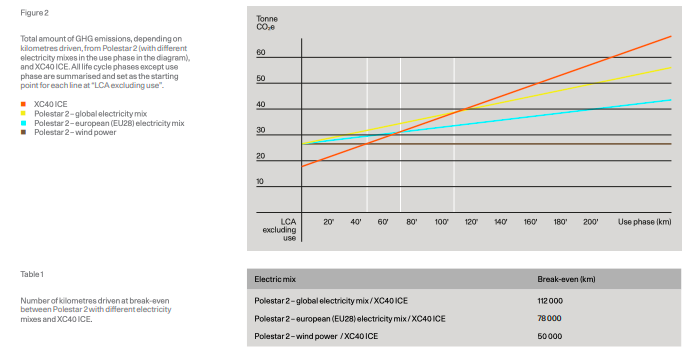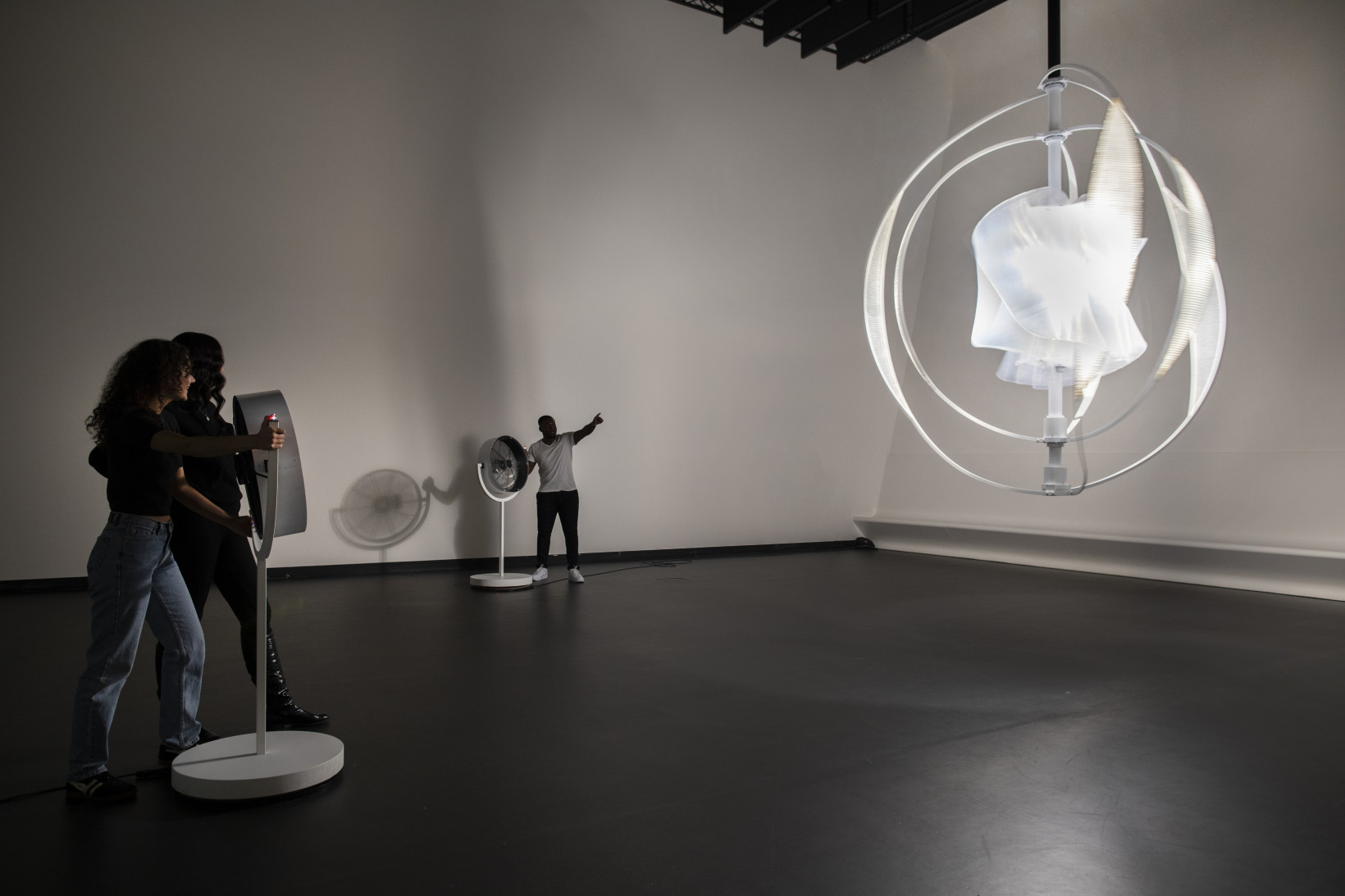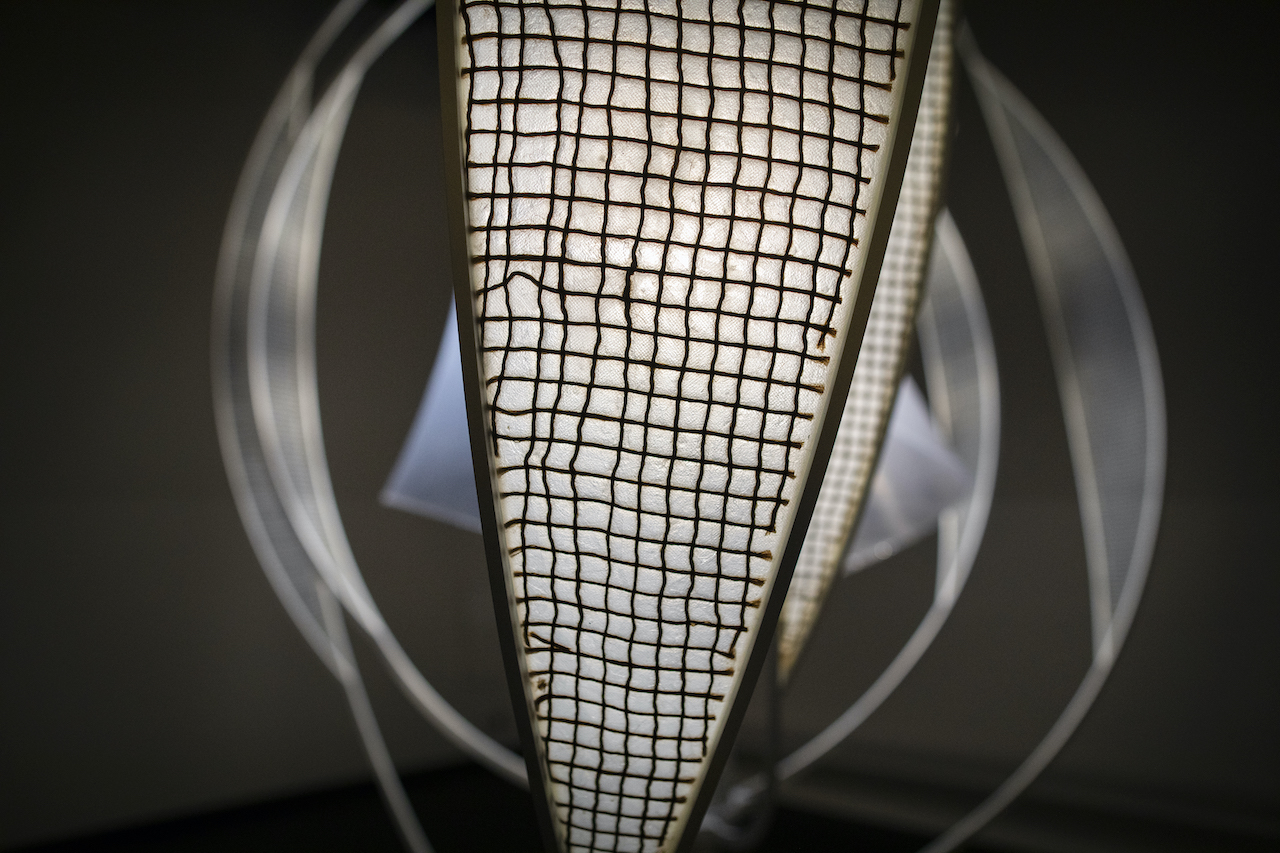Not only can art inspire physical action, it can also stimulate emotion and make the intangible feel tangible. According to eco artist Thijs Biersteker: Sounds neat… but why does it matter? Well, EV manufacturer Polestar is betting on art’s stimulating powers to get its sustainability message across. The company recently released a sustainability report for its new Polestar 2. While the report is an essential part of Polestar’s push towards brutal, bare naked transparency, the team behind it had to ask themselves whether it was the best way to achieve it. If no one reads sustainability reports besides the nerdiest of current EV drivers, do they make any impact at all? That’s why they teamed up with Biersteker to create an interactive installation inspired by key data from the report. The piece titled, We Harvest Wind, is now on display at the Stedelijk Museum in Amsterdam. TNW got an exclusive interview to find out about the backstory behind this intriguing piece and the underlying call to action.
Transforming cold hard data into climate art
He started to work with researchers from around the globe to see how he could use their rough data to create something that connects people to the numbers in a deeper way: In the past, he’s focused on creating awareness pieces including plastics from the ocean that mirror the movements of your body and an installation showing the amount of toxins that leak out of just one cigarette butt. When it comes to producing art based on complex climate change data, sometimes drawing out one stat or figure in a report can really help bring it to light. Just like one small change in our lifestyle can have a much bigger impact than we might realize. Could an installation make you think twice about choosing canvas or plastic at the grocery store or tossing that cigarette butt onto the street? Biersteker hopes so.
Visualizing the switch to renewable energy
Earlier this year, Polestar released what they call an ‘LCA (Life Cycle Assessment) report’ getting down to the nitty gritty details of the environmental impact of their new Polestar 2, from the materials being used to the end of life emissions of the car. One of the key parts of the report was an assessment showing how long it takes for drivers to offset production and manufacturing emissions based on the type of energy used to power their car. “Buying an EV isn’t enough, we have to ensure it’s charged with renewable energy,” Fredrika Klarén, Head of Sustainability at Polestar, explained. “It’s been so confusing for consumers to understand whether an EV is actually better than a petrol car because the automotive industry hasn’t put real data into the conversation.” Klarén said this is why Polestar wants to take a new approach by being more transparent than other car brands. “We’re going to publish the LCAs for all our upcoming models. You’ll see when we fail and you’ll see when we progress. It’s really a way for us to connect with our consumers and build trust. But, as she explained, they had to ask themselves, if there’s a report and no one reads it, will it make an impact? That’s when they decided to contact Biersteker. When reading the report, the data around the impact of simply switching to renewable energy sources was particularly striking for the artist. Zeroing in on this, he decided to create a massive wind turbine that could be powered by visitors.
Experimenting with new sustainable materials
Polestar has a sustainable materials team that’s tasked with researching new materials that can be used to replace non-sustainable components in future models, with the ultimate goal to produce a climate-neutral car by 2030. Klarén explained: You just press the fan and this world comes to life that’s powered by wind. I think if they take that away – that the power is in their hands and it’s not that hard – then I’m happy. It doesn’t have to be more complicated than that. Biersteker’s studio teamed up with their researchers to create the installation. Polestar is already making headway in creating a suitable material to replace plastic in its cars, so Biersteker decided to incorporate it in his installation. While the center of the installation was built using 60 kg of used plastic PET bottles, the outer wings were created using Polestar’s square-patterned’ plastic replacement. The material is a flax-based weave structure and is currently used to create the BCOMP PowerRibs displayed in the Polestar Precept car.
End of life for an eco art piece
Just like Polestar’s production process, when Biersteker develops a new piece, his team conducts emissions calculations on each component to ensure the pieces they produce are as sustainable as possible. Each installation also comes with a materials passport, which makes it easier to deconstruct and recycle in the future. This might seem like a weirdly practical approach, but for Biersteker, the goal of each piece is that it’ll have an ‘end of life’ — so there needs to be a plan in place for how to demolish his art after his death. This is also why Biersteker’s installations aren’t for sale. If awareness pieces like this are sold to collectors or museums, they’ll probably end up in a basement somewhere. “This reduces their function. I’d rather have it shown somewhere to create that awareness,” said Biersteker. For me it’s logical that things end. And, as a creator, you are accountable for how your pieces end. Maybe it’ll be there for 30 or 100 years, but at least I know I left it in a state that it’s not leaving the world worse than it was. Much like the installation, the Polestar team has also thought out an end of life plan for the Polestar 2 which is detailed in the LCA report.
What should you take away from this piece?
Art is subjective. Everyone will experience a piece from their own point of view. But Klarén hopes at least two key messages get across: The only question left is, will this inspire you to act? Find out by visiting We Harvest Wind which will be displayed at the Stedelijk museum until November 3, 2021. I also hope that we gain attention to the fact that we’re not securing renewable energy in our grid in the way that we should. We’re going to do our part at Polestar to ensure that we decarbonize the production of our cars, but we have to be supported by an energy grid that is supplied with renewable energy. That transition is going much too slow.




